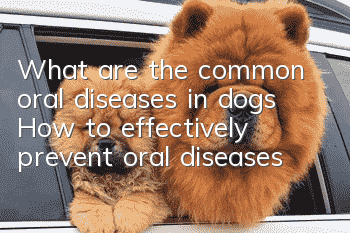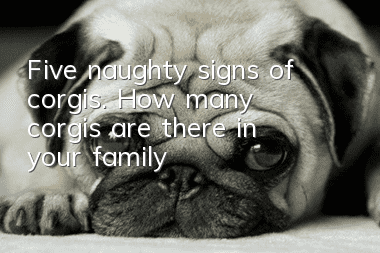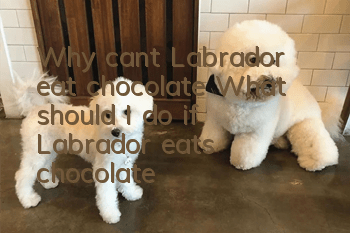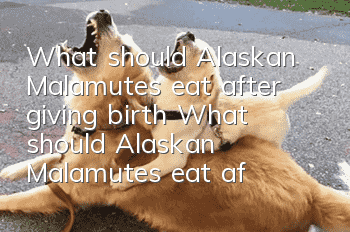What are the common oral diseases in dogs? How to effectively prevent oral diseases?

Plaque and dental calculus
If you do not take care of your dog’s teeth, over time, plaque will develop on the teeth, which is a layer of superficial appearance composed of bacteria, food residues and cellular mucus. A slightly milky white film, mostly attached to the teeth and gingival sulcus. Plaque accumulates in the gingival sulcus and slowly forms calculus when mixed with saliva, which then develops into gingivitis. Owners should clean their dogs’ teeth regularly, and take their dogs to the pet hospital for teeth cleaning if necessary. Gingivitis
Gingivitis is a precursor to periodontal disease. Where the gums meet the teeth is called the gingival sulcus or gum line. Because dogs don't know how to clean their teeth, their gums accumulate a lot of food residue after eating countless times, causing a large amount of bacteria to grow there. When bacteria invade the gums, they inflame the gum tissue and cause pain. If gingivitis is not treated in time, it will quickly develop into periodontitis, which will then cause bone loss, loose teeth, and eventually tooth loss.Periodontal disease
If the owner does not take care of the dog’s teeth, tartar will develop on the dog’s teeth over time. If the condition becomes severe, tartar can turn into periodontal disease. Periodontal disease is the most common dental disease in dogs. If tartar is not treated properly, tartar will accumulate in the later stages and form dental calculus. The calculus will remain between the teeth and gums and gradually surround the entire tooth. The accumulation of calculus will lead to the emergence of periodontal disease. Periodontal disease causes the gums to become swollen, inflamed, and bleed, severely damaging the gum tissue, causing teeth to loosen significantly, and ultimately leading to massive tooth loss. Periodontal disease is a very serious dental disease. Once the owner discovers that his dog has periodontal disease, he must take his dog to the hospital for treatment immediately.Tooth decay
Although relatively rare, dogs can also suffer from tooth decay. The cause of tooth decay is that food residue accumulates in the mouth, and then certain bacteria use the food residue as nutrients to continue to breed. While multiplying, an acidic substance is produced. When this acidic substance comes into contact with the teeth, it will slowly Dissolve calcium on teeth and form cavities. Tooth decay can cause gum pain, tooth necrosis, and loss of appetite in dogs.
Malocclusion
There are two main causes of malocclusion: First, there is a problem with the development of the dog's upper and lower jaws, resulting in the inability to open and close normally. The second is that when the dog's permanent teeth grow in, they are caught by the temporary teeth, causing ectopic growth. Dogs with misaligned bites will have their teeth stuck when they close their mouths, affecting their ability to eat. Broken Teeth
Dogs naturally like to chew on objects. Sometimes they chew large bones, metal and other foreign objects, causing their teeth to wear down or even break. Some overly active dogs may even break their teeth by running around. In addition, other dogs will also have this problem due to old age.Sublingual Abscess
If your dog’s salivary glands under the tongue are blocked, a large fluid-filled lump will appear on the underside of the tongue. This is a sublingual abscess. When the owner discovers that his dog has this disease, he is advised to see a doctor immediately for treatment.Technique to drain the fluid.How to prevent oral diseases
Daily dental care for dogs is very important. Do not neglect the daily care of your dog’s oral cavity. . The owner can brush the dog's teeth on a daily basis, buy dental cleaning sticks and other snacks for the dog, or take the dog to the hospital for regular check-ups, teeth cleaning, etc. It is important to perform daily oral care and take your animal to the hospital for regular check-ups. Random articles
- Twelve signs of dog depression, all of which are so heartbreaking
- What are the symptoms of Polish Lowland Sheepdog pregnancy? Polish Lowland Sheepdog Pregnancy Care Tips
- When is the best time to neuter a Polish Lowland Sheepdog? How to neuter a Polish Lowland Sheepdog?
- Causes of depression in dogs How to treat depression in dogs
- What can’t Labradors eat? Check if your dog has eaten these things.
- Pregnancy Pregnancy Precautions for Dogs What Owners Must Know Before Dog Pregnancy
- How to brush your Labrador’s teeth Precautions for brushing your Labrador’s teeth
- Disadvantages of Schnauzer Do you know what are the disadvantages of Schnauzer?
- How to care for a Samoyed during pregnancy. Do you know how to care for a Samoyed after pregnancy?
- What can Teddy eat? What are the foods that are good for Teddy?



